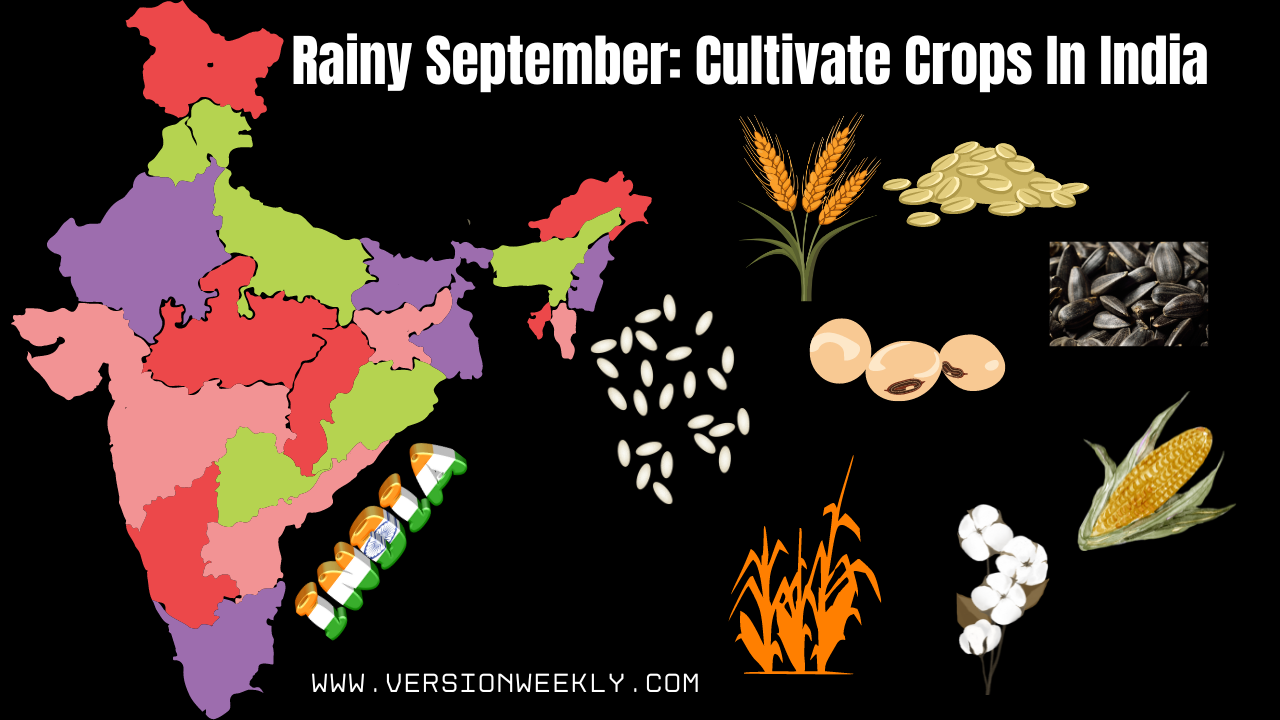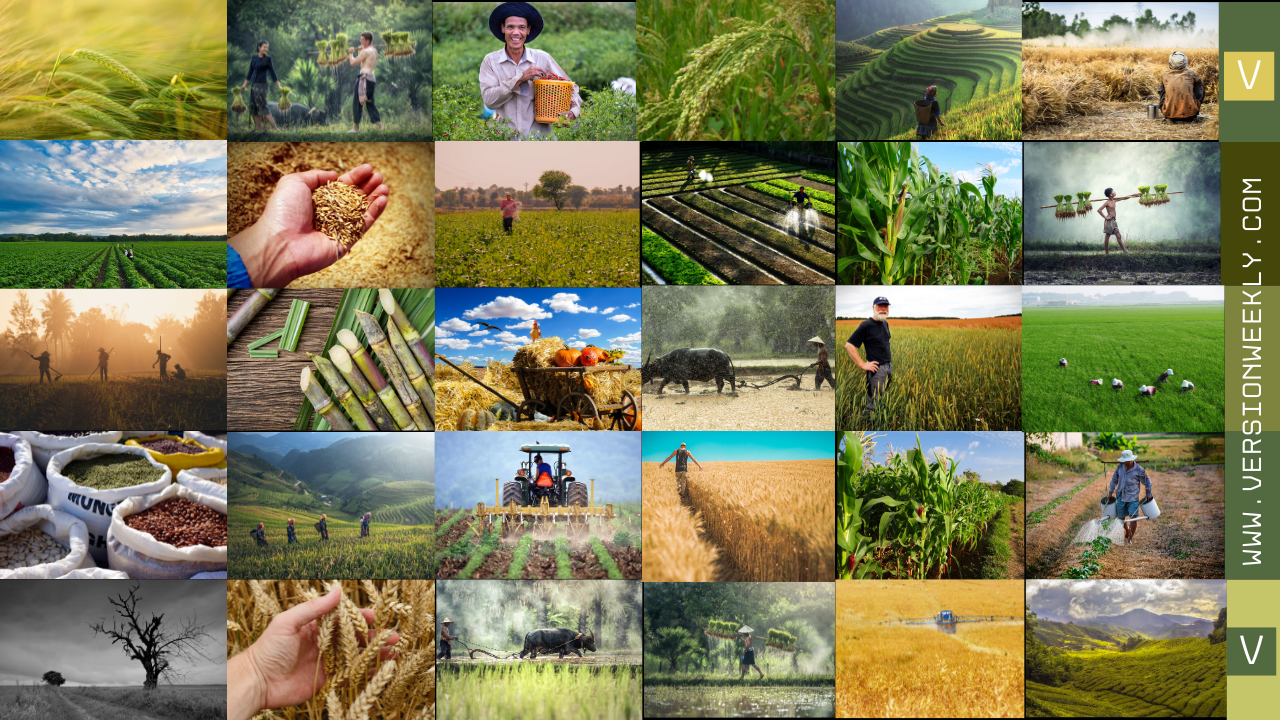The monsoon season is a good time for farmers to cultivate crops. The rains provide much-needed moisture to the soil, and the weather is still warm and humid, which is ideal for plant growth.
There are many different crops that can be cultivated in rainy September. Some of the most popular crops include rice, wheat, maize, and sugarcane. These crops are all relatively easy to grow and can be profitable for farmers.
Farmers should always consult with an agricultural expert before cultivating any crop. The expert can help them choose the right crop for their soil type and climate, and they can also provide advice on how to best care for the crop.
By cultivating crops in rainy September, farmers can ensure a good harvest and a good profit.
Rainy September: Cultivate Crops In India
The monsoon season is a time of plenty for farmers in India. The rains bring much-needed moisture to the soil, making it ideal for growing crops. September is one of the best months to cultivate crops in India, as the rains have usually subsided and the weather is still warm and humid. Let’s see the crops cultivated in this season, in each and every state of India, the types of soil they have, what the most grown crops in India, and the festivals they do in each and every state in a detailed way, along with versionweekly.com.
Andhra Pradesh: Rice, cotton, turmeric, chilies, and peanuts.
Type Of Soil:
- Red soil: Rice, cotton, turmeric, chilies, and peanuts.
- Black soil: Sugarcane, maize, and pulses.
- Laterite soil: Coffee, cashew nuts, and coconuts.
Telangana: Rice, cotton, and turmeric.
Type Of Soil:
- Alluvial soil: Rice, cotton, and turmeric.
- Laterite soil: Oilseeds and pulses.
Assam: Rice, tea, sugarcane, and jute.
Type Of Soil:
- Alluvial soil: Rice, tea, sugarcane, and jute.
- Laterite soil: Oilseeds and pulses.
Bihar: Rice, wheat, maize, and pulses.
Type Of Soil:
- Alluvial soil: Rice, wheat, maize, and pulses.
- Laterite soil: Oilseeds and sugarcane.
Chhattisgarh: Rice, maize, pulses, and oilseeds.
Type Of Soil:
- Alluvial soil: Rice, maize, pulses, and oilseeds.
- Laterite soil: Cotton and sugarcane.
Goa: Rice, cashew nuts, and coconuts.
Type Of Soil:
- Laterite soil: Rice, cashew nuts, and coconuts.
Gujarat: Cotton, wheat, groundnuts, and sugarcane.
Type Of Soil:
- Black soil: Cotton, wheat, groundnuts, and sugarcane.
- Alluvial soil: Rice and maize.
Haryana: Wheat, rice, maize, and pulses.
Type Of Soil:
- Alluvial soil: Wheat, rice, maize, and pulses.
Himachal Pradesh: Apples, potatoes, and peas.
Type Of Soil:
- Mountain soil: Apples, potatoes, and peas.
Jammu and Kashmir: Rice, maize, and pulses.
Type Of Soil:
- Mountain soil: Rice, maize, and pulses.
Jharkhand: Rice, maize, pulses, and oilseeds.
Type Of Soil:
- Alluvial soil: Rice, maize, pulses, and oilseeds.
- Laterite soil: Cotton and sugarcane.
Karnataka: Rice, sugarcane, cotton, and coffee.
Type Of Soil:
- Red soil: Rice, sugarcane, cotton, and coffee.
- Black soil: Maize and pulses.
- Laterite soil: Oilseeds and spices.
Kerala: Rice, coconuts, and spices.
Type Of Soil:
- Laterite soil: Rice, coconuts, and spices.
Madhya Pradesh: Rice, wheat, soybeans, and cotton.
Type Of Soil:
- Alluvial soil: Rice, wheat, soybeans, and cotton.
- Laterite soil: Oilseeds and pulses.
Maharashtra: Rice, sugarcane, cotton, and soybean.
Type Of Soil:
- Alluvial soil: Rice, sugarcane, cotton, and soybean.
- Black soil: Maize and pulses.

Manipur: Rice, maize, and pulses.
Type Of Soil:
- Alluvial soil: Rice, maize, and pulses.
Meghalaya: Rice, maize, and pulses.
Type Of Soil:
- Laterite soil: Rice, maize, and pulses.
Mizoram: Rice, maize, and pulses.
Type Of Soil:
- Laterite soil: Rice, maize, and pulses.
Nagaland: Rice, maize, and pulses.
Type Of Soil:
- Laterite soil: Rice, maize, and pulses.
Odisha: Rice, wheat, pulses, and oilseeds.
Type Of Soil:
- Alluvial soil: Rice, wheat, pulses, and oilseeds.
- Laterite soil: Cotton and sugarcane.
Punjab: Wheat, rice, maize, and sugarcane.
Type Of Soil:
- Alluvial soil: Wheat, rice, maize, and sugarcane.
Rajasthan: Wheat, bajra, and pulses.
Type Of Soil:
- Desert soil: Bajra, pulses, and oilseeds.
Sikkim: Rice, maize, and pulses.
Type Of Soil:
- Alluvial soil: Rice, maize, and pulses.
Tamil Nadu: Rice, sugarcane, cotton, and turmeric.
Type Of Soil:
- Alluvial soil: Rice, sugarcane, cotton, and turmeric.
- Laterite soil: Oilseeds and pulses.
Tripura: Rice, maize, and pulses.
Type Of Soil:
- Alluvial soil: Rice, maize, and pulses.
Uttar Pradesh: Wheat, rice, sugarcane, and maize.
Type Of Soil:
- Alluvial soil: Wheat, rice, sugarcane, and maize.
- Laterite soil: Oilseeds and pulses.
Uttarakhand: Rice, wheat, maize, and fruits.
Type Of Soil:
- Mountain soil: Rice, wheat, maize, and fruits.
West Bengal: Rice, jute, and sugarcane.
Type Of Soil:
- Alluvial soil: Rice, jute, and sugarcane.
- Laterite soil: Oilseeds and pulses.
It is important to note that the success of any crop depends on a number of factors, including the quality of the seeds, the amount of water, the amount of fertilizer, and the pest control measures. Farmers should always consult with an agricultural expert before cultivating any crop.
Festivals Of Agriculture In This Season In Different States
The monsoon season is also a time for festivals in many parts of India. Some of the major festivals that are celebrated during this time include:
- Teej / Hariyali Teej / Saavan ki Teej: This festival is celebrated by women in the states of Rajasthan, Madhya Pradesh, Uttar Pradesh, and Bihar. It is a celebration of the monsoon season and the start of the agricultural year.
- Karam Festival: This festival is celebrated by the tribal communities of Assam, Meghalaya, and Arunachal Pradesh. It is a thanksgiving festival for the monsoon rains and a prayer for a good harvest.
- Bhudenkhlam: This festival is celebrated in the Jaintia Hills of Meghalaya. It is a thanksgiving festival for the monsoon rains and a prayer for a good harvest.
- Aadi Perukku: This festival is celebrated by the Tamil community in Tamil Nadu. It is a thanksgiving festival for the monsoon rains and a prayer for a good harvest.
- Saputara Monsoon Festival: This festival is celebrated in the hill station of Saputara in Gujarat. It is a celebration of the monsoon season and the beauty of the hills.
These festivals are a way for people to celebrate the monsoon rains and to pray for a good harvest. They are also a way for people to come together and celebrate the beauty of the natural world.
Monsoon Season: Time To Cultivate Crops (Major Grown Crops) From June To September
- Rice: Rice is the most important crop in India and is grown in all states. It is grown during the monsoon season as it requires a lot of water.
- Cotton: Cotton is grown in the states of Gujarat, Maharashtra, and Madhya Pradesh. It is a cash crop and is grown for its fiber.
- Sugarcane: Sugarcane is grown in the states of Uttar Pradesh, Maharashtra, and Tamil Nadu. It is a major source of sugar in India.
- Maize: Maize is grown in the states of Madhya Pradesh, Rajasthan, and Uttar Pradesh. It is a cereal crop and is used for human consumption as well as animal feed.
- Jute: Jute is grown in the states of West Bengal and Assam. It is a major source of fiber in India and is used to make bags, ropes, and other products.
- Oilseeds: Oilseeds such as soybean, groundnut, and mustard are grown in the states of Madhya Pradesh, Rajasthan, and Uttar Pradesh. They are used to produce oil and other products.
- Pulses: Pulses such as lentils, chickpeas, and pigeon peas are grown in the states of Madhya Pradesh, Rajasthan, and Uttar Pradesh. They are a good source of protein and are used for human consumption.
These are just some of the major crops that are grown in India during the monsoon season. The specific crops that are grown in a particular region will depend on the climate, soil type, and other factors.
Conclusion
The monsoon season is a good time for farmers to cultivate crops. The rains provide much-needed moisture to the soil, and the weather is still warm and humid, which is ideal for plant growth.
There are many different crops that can be cultivated in rainy September. Some of the most popular crops include rice, wheat, maize, and sugarcane. These crops are all relatively easy to grow and can be profitable for farmers.
Farmers should always consult with an agricultural expert before cultivating any crop. The expert can help them choose the right crop for their soil type and climate, and they can also provide advice on how to best care for the crop.
By cultivating crops in rainy September, farmers can ensure a good harvest and a good profit.
